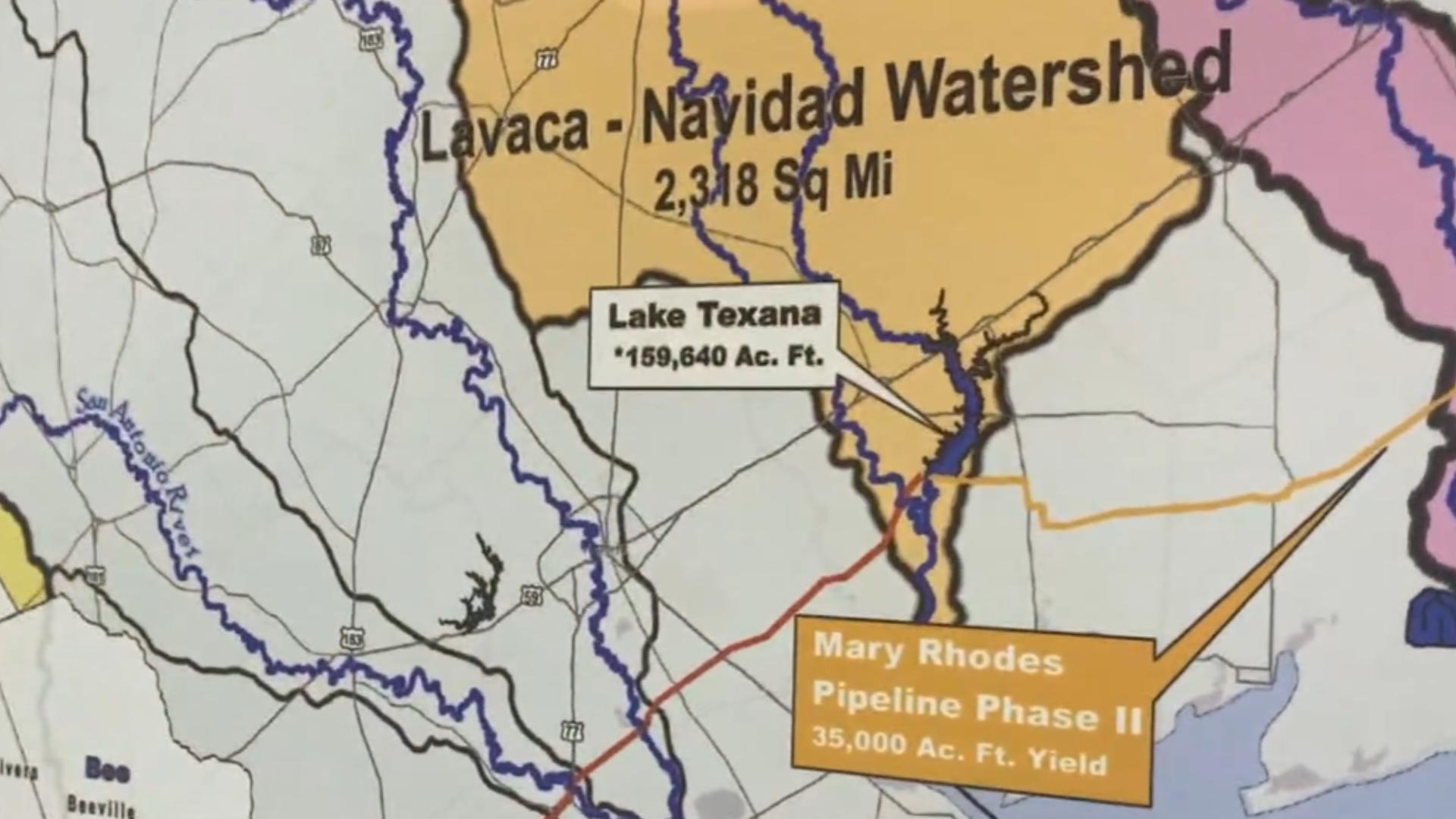CORPUS CHRISTI, Texas — City leaders are counting on some kind of tropical weather to help fill our lakes. As of Tuesday, combined lake levels are currently around 25.6 percent. The city uses both Lake Corpus Christi and Choke Canyon to get that number.
Once we fall below 20 percent, we will go into Stage 3 water restrictions.
Drew Molly spent a lengthy amount of time to talk water and answer questions about usage in front of council Tuesday. He said if we continue down the path we are on, we'll reach Stage 3 water restrictions by mid-August.
"Essentially we are at a point now, where we need an intense rain, 15-20 inches," he said.
That's the amount needed to get out of our current water situation according to the Chief Operating Officer for Corpus Christi Water.
Molly showed council a drought map over the last few months.
"Sometimes it gets better, as you can see here, it's gotten a little better but our water shed is still in drought," he told council.
Once we reach Stage 3 in our current drought contingency plan you will no longer be able to water your lawn and a surcharge could also be added to your utility bill.
"Any plan is not always going to make every different customer class we have in our city happy, at the end of the day it's something we need to do we need to have as much feedback to bring something to council that is hopefully agreeable," he said.
Corpus Christi gets its water from Lake Corpus Christi and Choke Canyon, a third source is Lake Texana brought in through the Mary Rhodes Pipeline, a lake that is over 97 percent full.
RELATED: City leaders learn valuable tips after tour of California desal plants that can be used here
"It's 31,000 acre feet a year, roughly is what we rely on from Lake Texana, and the difference with Lake Texana, it's a smaller watershed than Nueces, but it tends to collect water that falls far enough north to get more rain than we get," Molly said. "It tends to do a pretty good job collecting that rain."
An important water source.
Texana, a reservoir on the Navidad River near the city of Edna.
"We pull right now, we are pulling about 44 million gallons a day split between Lake Texana and the Colorado River."
If you look on a map, Lake Texana is much smaller than our other two water sources, less than a quarter the size of Choke Canyon but it currently has more water. 3NEWS asked Molly why it wasn't included in the combined lake levels.
3NEWS did the math. Factoring in Lake Texana would raise our combined lake levels by 10 percent; but Molly said due to an agreement with TCEQ, we do not include it.
"There's very prescriptive requirements as part of that agreed order in terms of how it dictates and drives the level of drought announcements we make and planning and that is something we have to follow," he said.
Molly said the Nueces River Watershed is our area's workhorse.
"That is where half of our water comes from we own all the water rights from it, unlike from the other source, we don't have water rights on Texana, we have a contract, we have junior rights on the Colorado River so really our workhorse for how we are doing is the Nueces River," he said.
According to the City's website, the contract on Lake Texana runs through 2035.
Molly said an updated contingency plan is being worked on and is expected to be brought to council for consideration next month.

